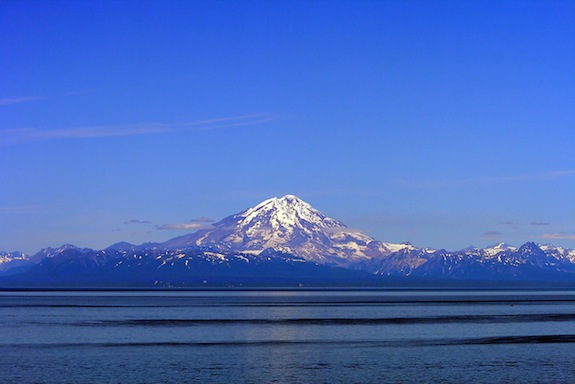Listen to a Volcano ‘Scream’
It turns out that there are some volcanoes that actually do ‘scream,’ emitting a tea-kettle-like screech prior to eruption.
/https://tf-cmsv2-smithsonianmag-media.s3.amazonaws.com/filer/colcano-scream-388.jpg)
Screaming volcanoes, in addition to being a fantastic name for a punk band, are a real world phenomenon. Some volcanoes actually do “scream,” emitting a tea-kettle-like screech prior to eruption.
In 2009, scientists recorded Alaskan volcano Redoubt making this sound, which they call a harmonic tremor. This recording condenses 10 minutes of sound into 10 seconds:
They also recorded one hour worth of rumbling earthquakes prior to eruption. They then sped up the recording, so that each earthquake sounds like a drumbeat. Here you can listen to the earthquake drumbeats increasing in tempo.
<iframe frameborder="no" height="166" scrolling="no" src="https://w.soundcloud.com/player/?url=http%3A%2F%2Fapi.soundcloud.com%2Ftracks%2F100321950" width="100%"></iframe>
According to the University of Washington, it’s not really clear where exactly these noises come from:
Some volcanoes emit sound when magma – a mixture of molten rock, suspended solids and gas bubbles – resonates as it pushes up through thin cracks in the Earth’s crust.
But Hotovec-Ellis believes in this case the earthquakes and harmonic tremor happen as magma is forced through a narrow conduit under great pressure into the heart of the mountain. The thick magma sticks to the rock surface inside the conduit until the pressure is enough to move it higher, where it sticks until the pressure moves it again.
Essentially, each time the magma moves, it creates a small earthquake. By the time the volcano is ready to explode, the quakes are happening so quickly that they become one sound.
More from Smithsonian.com:
Geologists Make Lava, Unleash it on New York
Song of Fire and Ice: Watch What Happens When Lava Meets Ice
Keep an Eye on Popocatépetl, the Volcano Erupting Just Outside Mexico City
